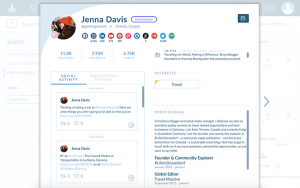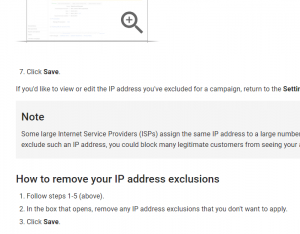— February 5, 2019
In 2019, experience reigns. It’s become a millennial buzzword in areas like travel and shopping, but experiences are just important at the office.
Your business should be embracing experiences as well: aiming for a consistent customer experience across touchpoints, creating an intuitive and inviting user experience in mobile and web apps, and creating an employee experience that motivates and inspires your team to succeed.
But how much thought have you put into the experience of your board of directors? After all, your board is one of the most important influences on your company’s early success. A great board has the ability to unlock possibilities in every area of your organization, from recruiting and operations to marketing and product development. On the other hand, a disorganized board can create or amplify obstacles in those same areas.
You have the ability to determine which type of board your startup have.
It’s tempting to see your board as a group of experts gathered to serve you, rather than another team to manage. However, like any other group in your company, they need guidance in order to succeed. And if you don’t prepare yourself for that, it’s all too easy to fall into the trap of seeing board relationship maintenance as a nuisance rather than an opportunity.
But no matter how experienced and visionary your board members are, they cannot help lead your company’s success without the information and resources to do so. And that’s on you to provide.
Steve Blank, author of The Startup Owner’s Manual, once wrote that “A veteran board can bring 50-100x more experience into a board meeting than a first time founder.”
However, even the most experienced board members cannot succeed in their duties when they don’t have all the information they need on your business plan, the industry, and other important factors of your startup’s future. If you need to spend hours at every meeting bringing everyone up to speed on these issues, then you won’t have enough time left to talk about strategy and concrete opportunities.
Take, for example, the rise and fall of social bookmarking site Digg. At its peak, it was fielding acquisition offers for tens, even hundreds, of millions of dollars from industry leaders. But the company’s board rejected the offers, holding out for a larger deal that never came. The company ended up selling for less than half a million, a mere fraction of the rejected offers.
One of the key ways to both attract a talented board of directors and let them succeed, is to consider the processes you’ll use to work together. Here are a few ways you can begin to improve that experience.
Create agendas early
Most meetings are a huge waste of time and dollars, simply because they’re inefficient and disorganized. And since board meetings are a collection of your most valuable non-staff stakeholders in one room, your startup truly cannot afford for you to run them inefficiently.
The easiest way to improve the structure of your board meetings is to carefully lay out the agenda and make it available to everyone ahead of time. A good agenda benefits everyone.
Taking time to think about the agenda in advance ensures you bring up everything the group needs to discuss. Sending out the agenda to board members in advance gives them time to prepare – whether that means doing research, putting together some materials, or simply giving a certain idea some forethought.
And finally, having the agenda to reference during the meeting keeps everyone on-topic and helps prevent tangents and distractions.
Make important resources easy to find
Another way you can make board participation and engagement way easier is to streamline the tools, documents, and other assets that board members need so they can most effectively serve on the board. This includes minutes from all prior board meetings and extends to partnership agreements, certificates of incorporation, strategy docs, financial reports and beyond.
Board members are already using enough tools and software platforms in their other endeavors. The more you add to that, the harder it makes staying up to date on your company, which inhibits how well they can help.
Instead of requiring them to log into multiple tools, dashboards and document libraries, streamline and present it all to them in one unified location. For example, creating a virtual portal for your board members using a calendar-synced document management platform like ContractZen allows you to centralize links to important documents, information, and notes all in one place. Instead of expecting your board members to store and keep track of important info on their own, you can take care of it for them in an easy-to-use dashboard.
You can also streamline communication by using a group communication tool like Slack or Twist instead of starting a new group email thread every time the board needs to have a one-off virtual conversation.
Lessen the burden of scheduling meetings
Finally, let’s talk scheduling. Getting any group of busy people together is a challenge. But it’s even harder for professionals like board members. Your board of directors is only one component of their career. Members often serve on multiple boards and have their own full-time jobs to attend to.
Their calendars are so full, it’s tempting to be as flexible as possible when initiating a meeting or call. But in trying to be flexible and accommodate everyone, you can end up making scheduling even more difficult by not providing restraints.
Not laying out some kind of possible timeframe, options, or restraints puts pressure on the other people you’re meeting with to suggest and come up with times for you. It also prolongs the scheduling discussion, as once someone else suggests an option everyone else needs to weigh in on it.
Instead, simplify the scheduling process for board meetings as much as possible. Appointment scheduling or group meeting tools like Rallly or NeedToMeet are easy-to-use solutions.
If you do schedule meetings manually via email, phone, or messaging, provide a few restraints from the start of the scheduling conversation. For example, asking attendees to meet either in the first week of the month, on a Tuesday morning, or within the next 14 days gives them more specificity to go off of when looking for availability for you in their calendars.
Make engagement easy
Like any intentionally designed experience in your business, the aim with your board of directors is to make engagement easy. The less friction, effort, and tools it takes to participate, the more effort and energy your board members can spend on serving your startup.
A version of this article originally appeared on Thrive Global.
Business & Finance Articles on Business 2 Community
(73)
Report Post





